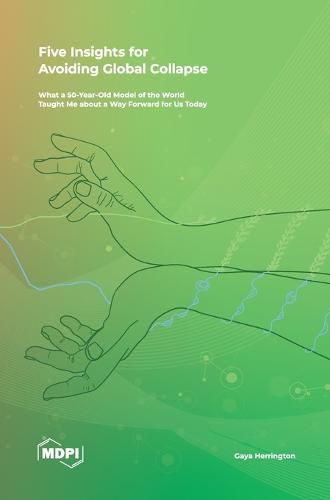Readings Newsletter
Become a Readings Member to make your shopping experience even easier.
Sign in or sign up for free!
You’re not far away from qualifying for FREE standard shipping within Australia
You’ve qualified for FREE standard shipping within Australia
The cart is loading…






This title is printed to order. This book may have been self-published. If so, we cannot guarantee the quality of the content. In the main most books will have gone through the editing process however some may not. We therefore suggest that you be aware of this before ordering this book. If in doubt check either the author or publisher’s details as we are unable to accept any returns unless they are faulty. Please contact us if you have any questions.
Looming environmental and social breaking points, like climate change and massive inequalities, are becoming increasingly apparent and large in scale. In this book, Gaya Herrington puts today's key societal challenges in perspective. Her analysis, rooted in her research on a 50-year-old model of the world that forecasted the onset of global collapse right around the present time, brings some structure to what otherwise might feel like the overwhelming task of achieving genuine societal sustainability.
Herrington's research, first published in 2020 in Yale's Journal of Industrial Ecology, went viral after it revealed empirical data tracked closely with the predictions of this world model, which was introduced in the 1972 best seller The Limits to Growth. Her book Five Insights for Avoiding Global Collapse contains an exclusive research update based on 2022 data and is written in a more personable and accessible style than the journal article. Herrington also elaborates more in this book on the many interlinkages between our economic, environmental, and social predicaments, and on what her findings indicate for future global developments.
Herington lays out why "business as usual" is not a viable option for global society and identifies the root cause of this unsustainable path. Most importantly, her book teaches us what systemic changes humanity still has time to make to achieve a better tomorrow. A future in which society has transformed beyond the mere avoidance of collapse and is truly thriving.
$9.00 standard shipping within Australia
FREE standard shipping within Australia for orders over $100.00
Express & International shipping calculated at checkout
This title is printed to order. This book may have been self-published. If so, we cannot guarantee the quality of the content. In the main most books will have gone through the editing process however some may not. We therefore suggest that you be aware of this before ordering this book. If in doubt check either the author or publisher’s details as we are unable to accept any returns unless they are faulty. Please contact us if you have any questions.
Looming environmental and social breaking points, like climate change and massive inequalities, are becoming increasingly apparent and large in scale. In this book, Gaya Herrington puts today's key societal challenges in perspective. Her analysis, rooted in her research on a 50-year-old model of the world that forecasted the onset of global collapse right around the present time, brings some structure to what otherwise might feel like the overwhelming task of achieving genuine societal sustainability.
Herrington's research, first published in 2020 in Yale's Journal of Industrial Ecology, went viral after it revealed empirical data tracked closely with the predictions of this world model, which was introduced in the 1972 best seller The Limits to Growth. Her book Five Insights for Avoiding Global Collapse contains an exclusive research update based on 2022 data and is written in a more personable and accessible style than the journal article. Herrington also elaborates more in this book on the many interlinkages between our economic, environmental, and social predicaments, and on what her findings indicate for future global developments.
Herington lays out why "business as usual" is not a viable option for global society and identifies the root cause of this unsustainable path. Most importantly, her book teaches us what systemic changes humanity still has time to make to achieve a better tomorrow. A future in which society has transformed beyond the mere avoidance of collapse and is truly thriving.